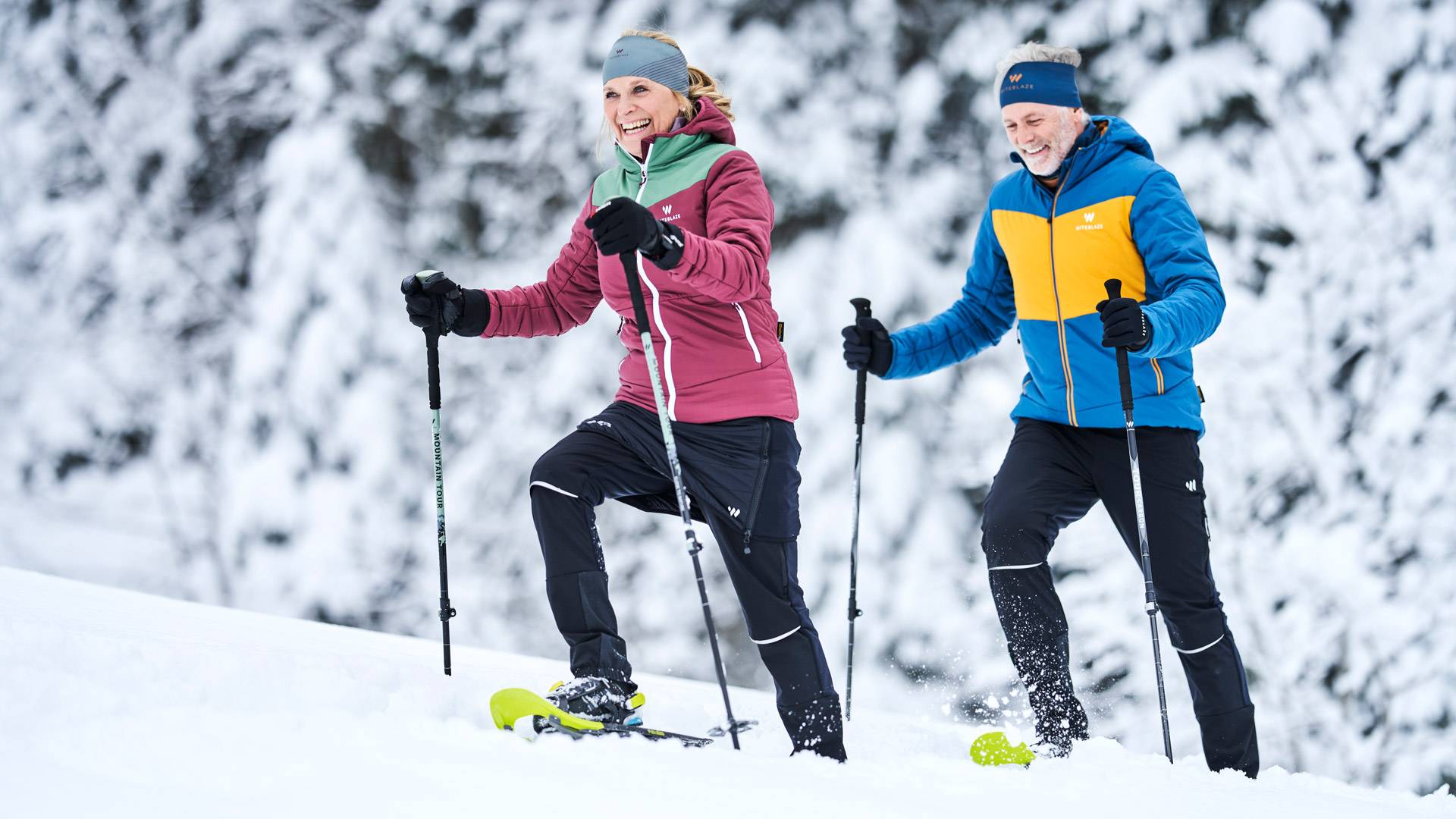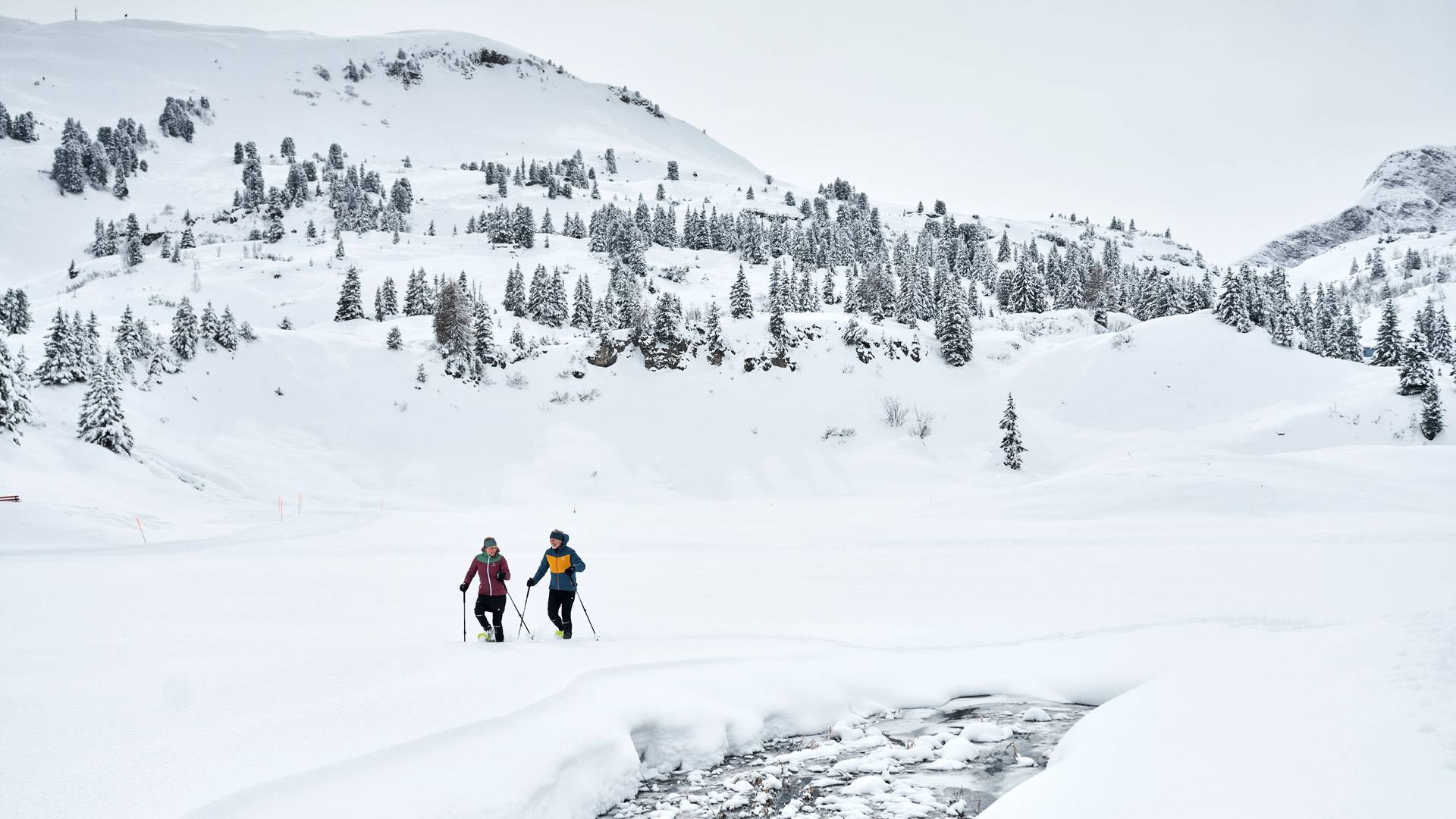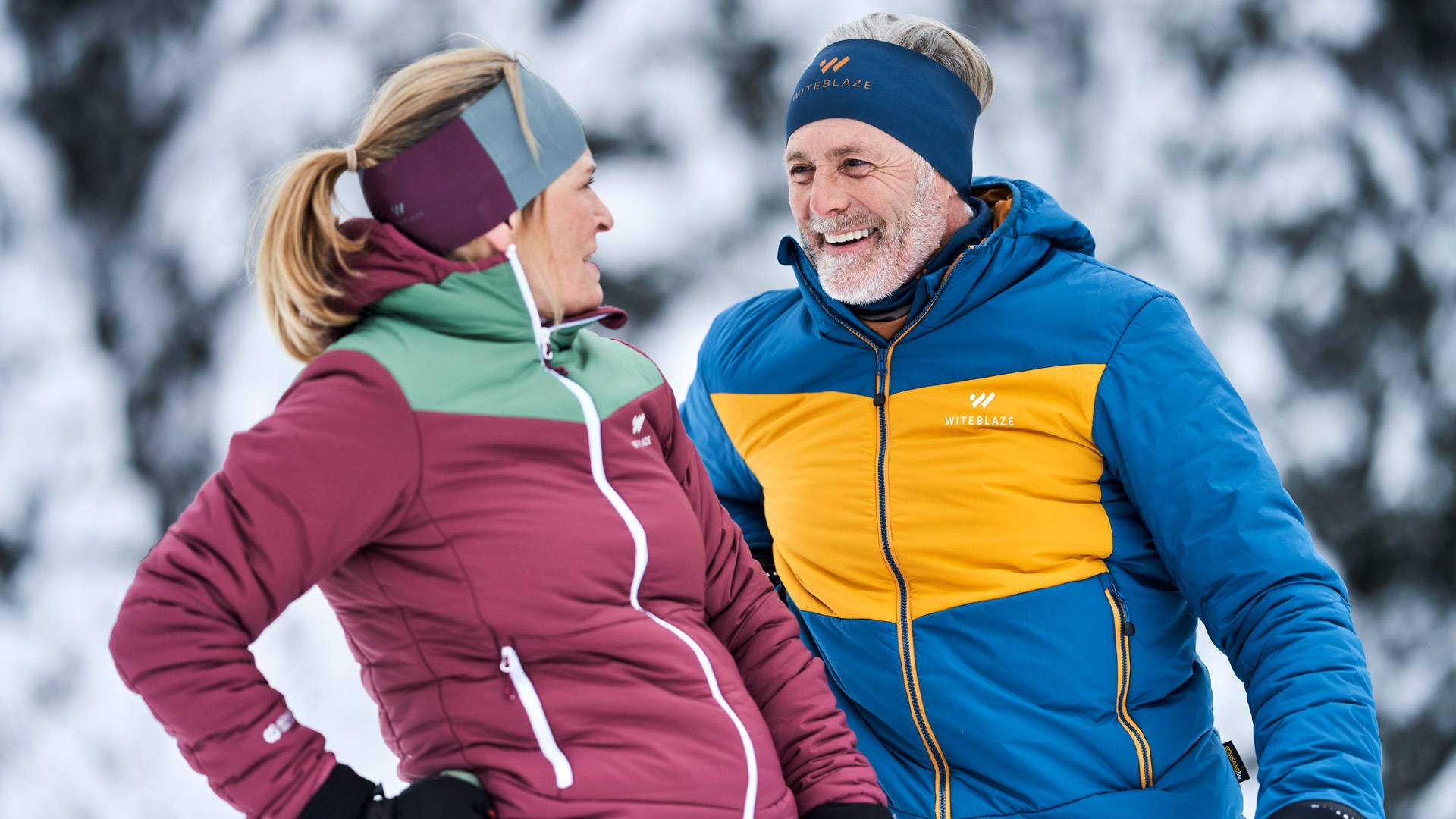
Step by step through the wintry silence
The snow crunches softly underfoot, ice crystals glisten in the sun, your breath steams in the clear winter air and the winter landscape unfolds before your eyes in all its white splendour. This magic can be experienced particularly impressively when snowshoeing. This winter activity offers outdoor enthusiasts a unique opportunity to immerse themselves in the magic of winter away from the hustle and bustle of the piste. Step by step by step: the slow, steady progress in particular helps you to escape the hectic pace of everyday life and enjoy the beauty of the cold season to the full.
Energising activity for winter nature lovers
As snowshoeing requires no previous experience, is accessible to everyone and turns winter into an active season for non-skiers, the number of fans trudging through the local forests and mountains in snowshoes is growing. This is not surprising - after all, it offers an excellent opportunity to actively enjoy the winter tranquillity and beauty of nature, reduce stress and promote physical fitness.
The activity itself is not new; snowshoes have been in use for centuries. Nevertheless, the consistent further development of snowshoe design has resulted in a remake of snowshoeing that makes this outdoor activity more accessible and attractive for many people.

The right equipment for snowshoeing
To make snowshoeing safe and comfortable, you need the right equipment. This includes warm clothing, waterproof boots, poles and, of course, snowshoes. The choice of snowshoes is particularly important, as they can have a significant impact on comfort and performance while hiking. There are different types of snowshoes to choose from, including flatland or hiking snowshoes, mountain snowshoes and specialised backcountry or deep snow snowshoes. Choose the type that best suits your planned activities as well as your body weight. The professionals at SPORT 2000 will be happy to advise you.
- The binding system should be safe and easy to use. There are bindings with straps and buckles as well as modern ratchet or quick-release bindings. Test what works best for you.
- Traction and claws: Pay attention to the type of traction on the underside of the snowshoes. Depending on where you want to hike, you can choose models with claws and crampons of different strengths.
- Frame material: Snowshoe frames can be made of aluminium or plastic. Aluminium frames are lighter and more durable, while plastic frames are lighter and float better in soft snow.
- Stability and flexibility: Some snowshoes offer better stability and lateral support, while others are more flexible and easier to manoeuvre. Your choice depends on your activities.
- Tail design: Some snowshoes have a tail at the rear end to make walking easier. This can be particularly advantageous in deep snow.

Two models in comparison
Two popular options on the market are the Inook AXM and the Tubbs Flex VRTW. Both offer different benefits and are suitable for different needs.
The Inook AXM is a versatile snowshoe that is well suited for beginners. With its simple binding and good traction, it is perfect for relaxed winter hikes. On the other hand, the Tubbs Flex VRTW offers a more advanced technology that is particularly suitable for experienced snowshoe hikers. Its FlexTail design allows for a natural gait and its aggressive claws provide exceptional traction on challenging terrain.
You can find more products in the range at all SPORT 2000 retailers. Here is an overview of the range.